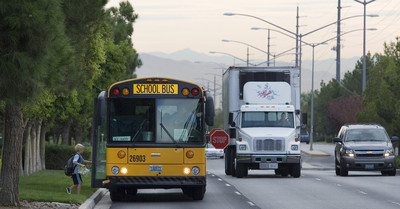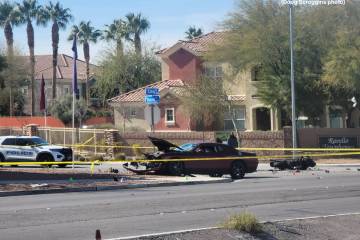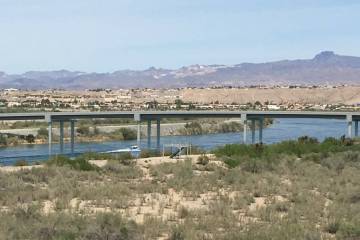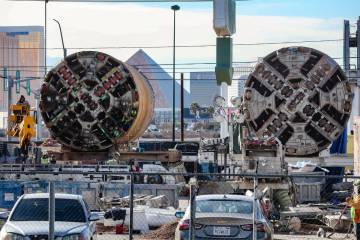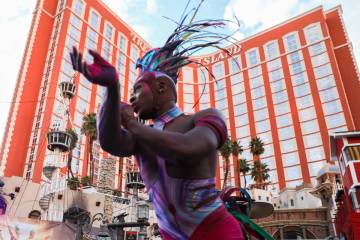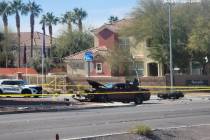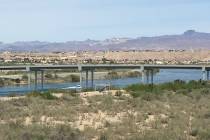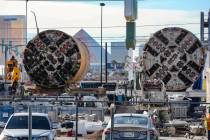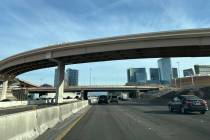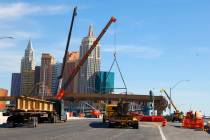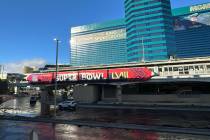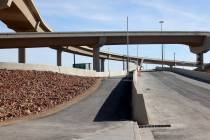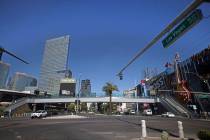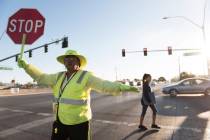Slight Changes In School Bus Stops
This week, the old Road Warrior answers one last round of reader questions -- about stopping for school buses and cleaning up after crashed cars -- before he hits the road and allows the new Road Warrior to set up shop.
And the outgoing Warrior has a final so-long for Las Vegas that doesn't involve the use of any particular finger.
Jerry Kinersly asks: I recently attended a driver's education class and was informed that, as of mid-year 2007, all cars must stop if a school bus has stopped with their red lights on and the stop sign has been put out. We were told that this now included traffic that is going in the opposite direction with a barrier between the bus and lanes going in the opposite direction. If this is correct, shouldn't the Road Warrior use the power of the presses to inform the public?
Yes and no. Does that help?
Let me elaborate. Yes, that's my job and yes, the law has changed somewhat regarding school bus stops. But no, the change isn't as broad as advertised.
"No significant change in the school bus statute," Capt. Tom Conlin, who heads the traffic bureau for Las Vegas police, told me by e-mail.
A change in state law removed a reference that traffic must yield for stopped school buses only "upon a highway, street or road," so that the law can be applied anywhere a bus is stopped.
"Apparently, people are not stopping for school buses discharging pupils on private property or alleyways, the only other viable locations other than highways, streets or roads" Conlin said.
The change will now allow cops to ticket scofflaws for the offense on private streets inside gated communities, according to Conlin.
But Conlin said there was no change elsewhere in the law, meaning that cars traveling in the opposite direction on a divided highway need not stop for a bus.
According to state law, a divided highway "means a highway divided into two or more roadways by means of a physical barrier or dividing section, constructed so as to impede the conflict of vehicular traffic traveling in opposite directions."
Median walls or raised islands would qualify as such.
Maurice Silva asks: Who is responsible for cleaning up after an accident on Las Vegas roads?
Tow truck drivers. It's actually required by law under Section 484.631 in the state's book of laws, known as the Nevada Revised Statutes:
"Tow cars must be equipped with one or more brooms, and the driver of the tow car engaged to remove a disabled vehicle from the scene of an accident shall remove all glass and debris deposited upon the roadway by the disabled vehicle which is to be towed," the law read.
Tow truckers are also required by law to spread dirt on any oily spots left by a wreck. Failing to clean up can result in a citation, a bill for any follow-up cleaning and even licensing action by the Transportation Services Authority.
Conlin said he can't recall a tow truck driver ever being cited for failing to do the job (though I've seen plenty of circumstantial evidence around town in the form of shattered auto glass piled amid intersections).
Hit 'n' Run: It's been a fun run, but this is my last column as the Road Warrior, as I have returned to my native Midwest.
Thanks to everybody who chipped in with an idea, thought, rant, observation, critique, death threat and, especially, all your questions about all the nonsense on the valley's byways. Your eyes and ears make this column work, so please keep those calls, letters and e-mails coming to the new guy! He's waiting to hear from you.
You may be wondering who exactly is the new guy. That's one question I'm not gonna answer. I'll let him introduce himself Sunday.
I'll next see you as a tourist! Once I save up some money to blow or I get sick of winter. Whichever comes first.
If you have a question, tip or tirade, call 383-2904, or send an e-mail to roadwarrior@reviewjournal.com. Please include your phone number.
ROAD WARRIORMORE COLUMNSDiscuss this column in the eForums!
Drivers can expect lane reductions over the next few months on Lone Mountain Road just west of Durango Drive to allow flood control work. Some side streets also might be closed at times at Lone Mountain. Ann Road or Alexander Road are recommended as alternate east-west routes. The southbound U.S. Highway 95 onramp and offramp at Jones Boulevard will be closed, and there will be lane reductions on Jones Boulevard between Alta Drive and Washington Avenue through Oct. 18. The southbound U.S. 95 offramps to Decatur Boulevard and Valley View Boulevard are temporarily sharing the same exit ramp west of Decatur, which is marked the "Valley View/Decatur" exit. The southbound U.S. 95 onramp from Valley View Boulevard is closed through Nov. 6. Drivers are advised to use alternate ramps at Decatur Boulevard or Rancho Drive.



